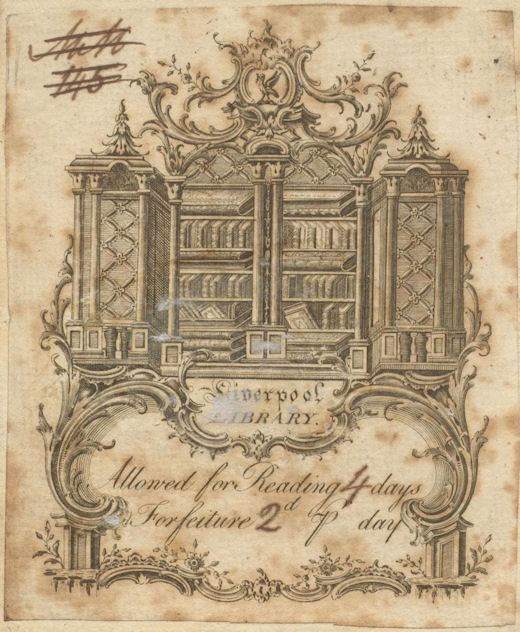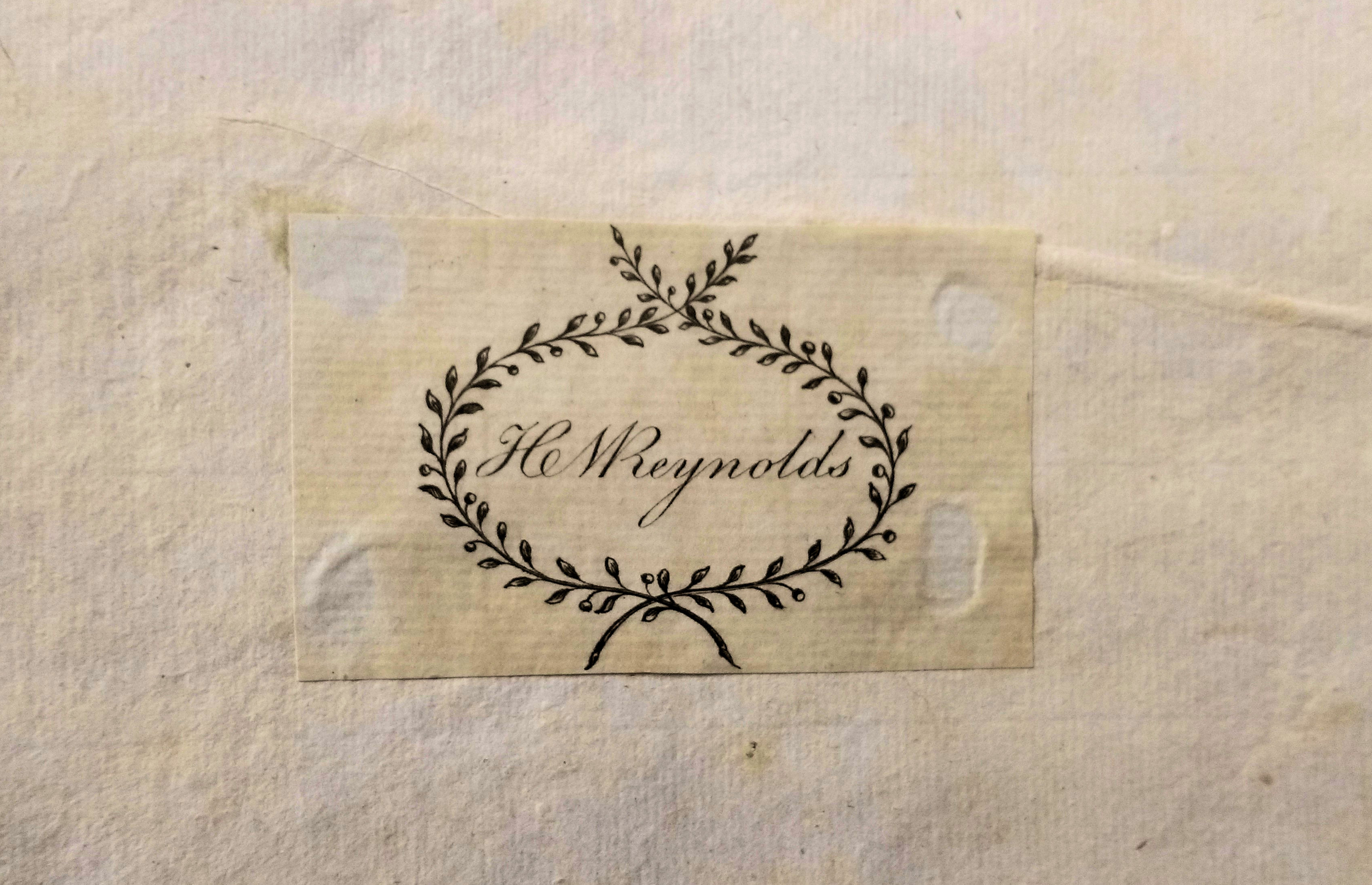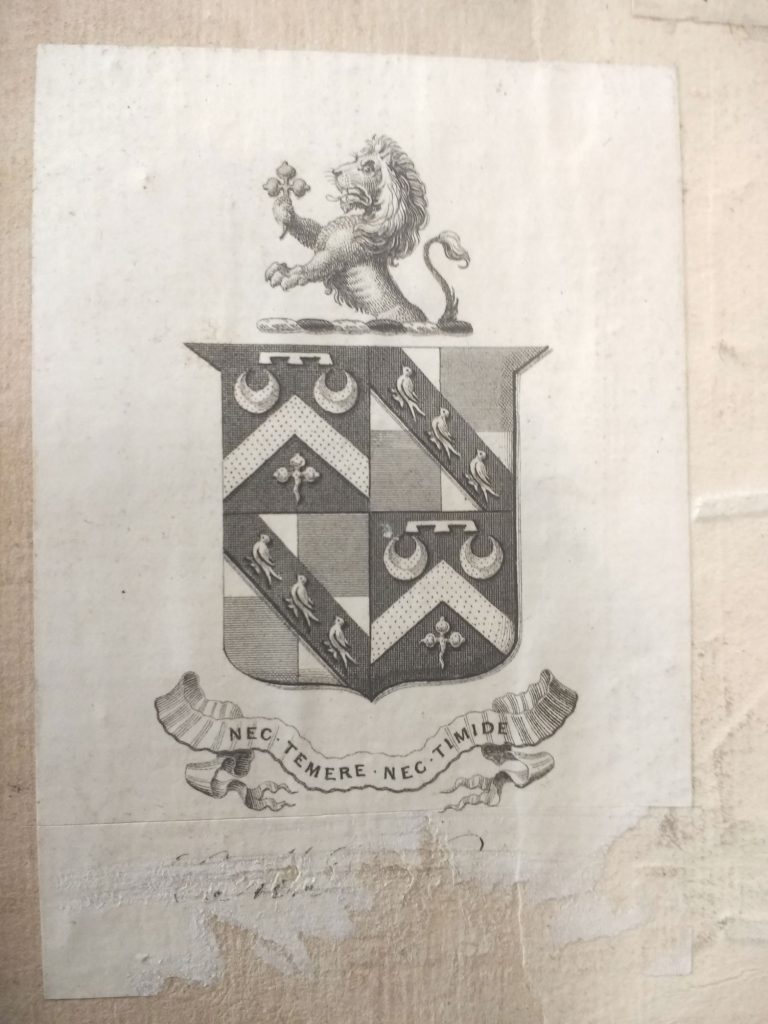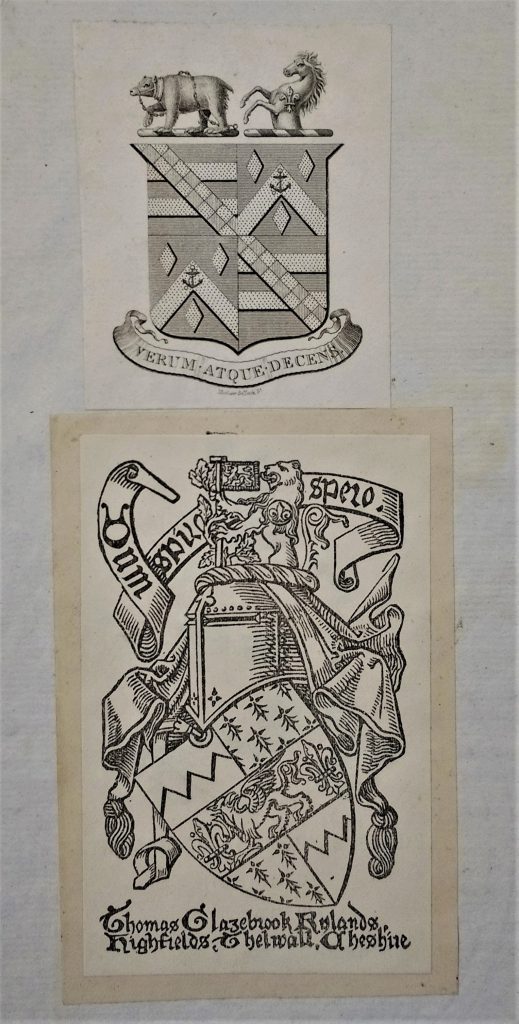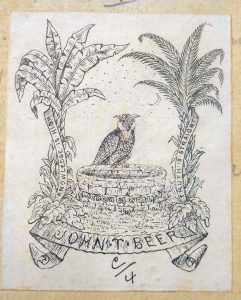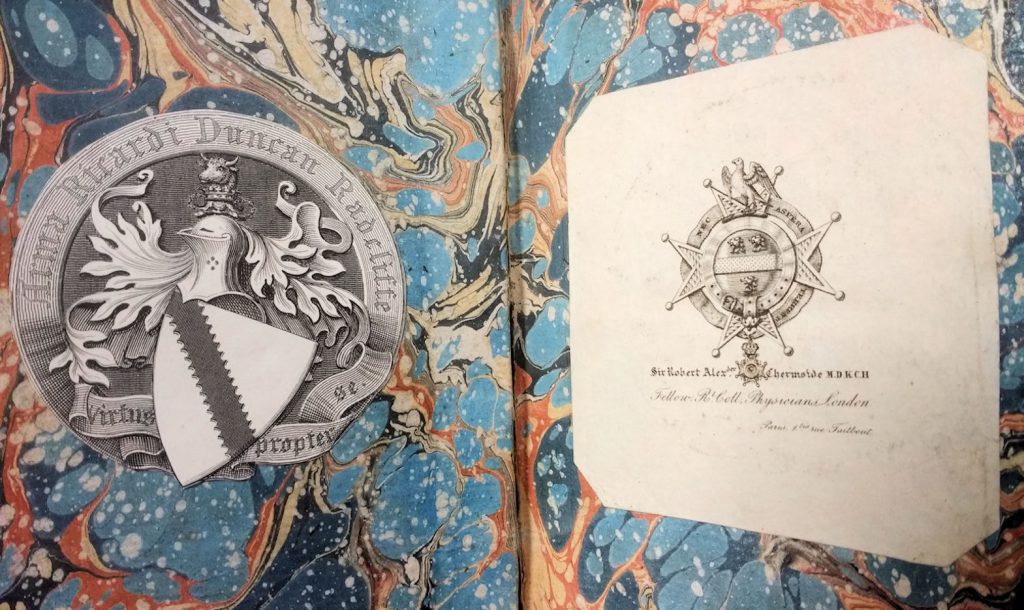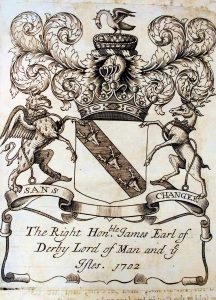For almost as long as there have been printed books, there has existed a practice of marking ownership of those books through the use of an engraved or printed paper label. Bookplates typically contain an engraved or etched armorial or pictorial design, with the owner’s name or initials and perhaps a motto, address, occupation or degree. The term ‘book label’ has tended to be used for smaller and simpler labels, with a characteristic design comprised of an owner’s name within a relatively plain decorative border.
It is not uncommon to find more than one bookplate or book label within a book, helping to build a picture of the life of an object by revealing the various individuals that have come into contact with it, and the various locations to which it has travelled. Often a later owner may have pasted a bookplate over the top of a previous owner’s bookplate, or made some attempt to erase a previous bookplate.
The design of bookplates has been subject to different fashions over time, and it is often possible to date a bookplate according to a recognisable trend in style. Some renowned artists have designed bookplates – including Hans Holbein, Albrecht Durer, Kate Greenaway and Walter Crane. They offer interest not just to those concerned with the history of books and book ownership, then, but also from an art-historical viewpoint.
If you are interested in learning more about the history and study of bookplates and book labels, a good place to start is with David Pearson’s “Provenance Research in Book History” which is available to consult in the Special Collections and Archives reading room.
